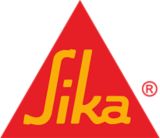
Sika® AcouBond® System
Acoustical Dampening System for Wood Floors.
The Sika® AcouBond® System incorporates Direct Bond Technology with acoustic performance. The Sika® AcouBond® System consists of SikaLayer®-03, a 1/8” (3 mm) proprietary specially slotted foam mat, and the SikaBond®-T53, unique permanently elastic, super strong, sound dampening adhesive.
- Dimensionally stable and pressureresistant. Defined amount of adhesive consumption. Low weight for transport.
- No limitations on maximum wood length. Bonds unlimited width solid and engineered planks directly to concrete substrates.
- 500% Elongation
- Fast curing for early green strength and superior holding power
- Extremely easy to install
- Independently tested to – IIC 59 and STC 60
- Independently tested to – FIIC 59 and FSTC 59
- Structurally bonds wood flooring to the subfloor
- Eliminates the extensive labor of installing cork underlayments
- No need for sleepers and plywood over concrete- and gypsum-based subfloors
- Innovative walk-on work method
- Can reduce overall installation costs up to 30%
- Suitable for bonding wood floors directly onto old ceramic tiles
- Reduces stress on the substrate
